Things to do for headaches. Migraine With vs. Without Aura: Understanding Key Differences and Effective Management
What are the main differences between migraine with aura and without aura. How do symptoms, triggers, and treatments vary between these two types of migraines. What should you know about aura symptoms and when to seek medical attention.
Understanding Migraine: More Than Just a Headache
Migraine is a complex neurological condition that affects millions of people worldwide. It’s characterized by intense, often debilitating headaches accompanied by a variety of other symptoms. However, not all migraines are created equal. One of the key distinctions in migraine types is the presence or absence of an aura.
What Exactly is a Migraine?
A migraine is far more than just a severe headache. It’s a neurological condition that can cause a range of symptoms, including:
- Intense, throbbing head pain (often on one side)
- Nausea and vomiting
- Sensitivity to light, sound, and smells
- Visual disturbances
- Difficulty concentrating
- Fatigue
Migraines can last anywhere from 4 to 72 hours and can significantly impact a person’s quality of life.

Migraine With Aura: A Unique Sensory Experience
Approximately one-third of migraine sufferers experience what’s known as an “aura” before or during their migraine attack. But what exactly is an aura?
Defining Migraine Aura
An aura is a set of sensory disturbances that typically occur before the onset of migraine pain. These disturbances can affect vision, sensation, speech, and motor control. Auras usually develop gradually over 5 to 20 minutes and can last up to an hour.
Common Aura Symptoms
The most frequently reported aura symptoms include:
- Visual disturbances (e.g., flashing lights, zigzag lines, blind spots)
- Tingling or numbness in the face or extremities
- Difficulty speaking or finding words
- Weakness on one side of the body
- Auditory hallucinations or ringing in the ears
It’s important to note that aura symptoms can vary greatly from person to person and even from one migraine attack to another.
Migraine Without Aura: The More Common Type
While migraine with aura is certainly significant, migraine without aura is actually the more prevalent form of the condition. But what sets it apart?
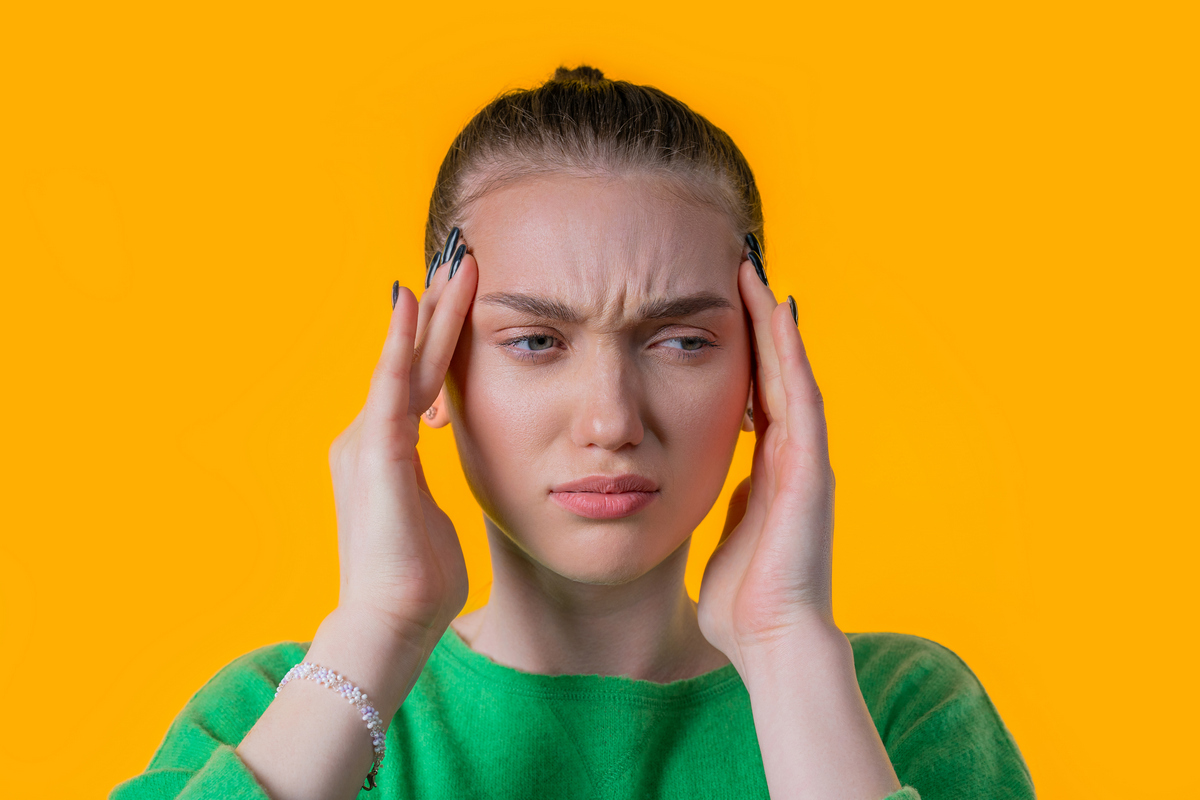
Characteristics of Migraine Without Aura
Migraine without aura, also known as common migraine, is characterized by the typical migraine symptoms without the preceding aura phase. Key features include:
- Sudden onset of headache pain
- Pain typically on one side of the head
- Pulsating or throbbing nature of the pain
- Nausea and potential vomiting
- Sensitivity to light and sound
- Worsening of pain with physical activity
While these migraines lack the warning signs provided by an aura, they can be just as debilitating and disruptive to daily life.
The Science Behind Migraines: What Causes These Headaches?
Understanding the underlying causes of migraines can help in managing and potentially preventing them. So, what do we know about the origins of these complex headaches?
Neurological Basis of Migraines
While the exact cause of migraines remains a subject of ongoing research, scientists believe that they involve complex interactions within the brain. Key factors include:
- Changes in brain chemicals, particularly serotonin, calcitonin gene-related peptide (CGRP), and dopamine
- Activation of the trigeminal nerve, a major pain pathway
- Inflammation of blood vessels in the brain
- Genetic predisposition (migraines often run in families)
The prevailing theory suggests that a wave of nerve cell activity spreads across the brain, triggering the release of neurotransmitters. This leads to changes in blood vessel size and further neurotransmitter release, ultimately resulting in inflammation and pain.

Migraine Triggers: What Sets Off an Attack?
While the internal mechanisms of migraines are complex, many sufferers can identify external factors that tend to trigger their attacks. Common triggers include:
- Stress and anxiety
- Hormonal changes (especially in women)
- Certain foods and drinks (e.g., alcohol, caffeine, aged cheeses)
- Changes in sleep patterns
- Environmental factors (bright lights, loud noises, strong smells)
- Weather changes
- Physical exertion
Identifying and managing these triggers can be a crucial part of migraine prevention for many individuals.
Diagnostic Approaches: How Are Migraines Identified?
Accurately diagnosing migraines, particularly distinguishing between those with and without aura, is crucial for effective treatment. So how do healthcare providers approach this task?
Medical History and Symptom Analysis
The first step in diagnosing migraines typically involves a thorough review of the patient’s medical history and a detailed description of their symptoms. Healthcare providers may ask questions such as:

- How often do you experience headaches?
- How long do your headaches typically last?
- Do you experience any warning signs before a headache begins?
- What other symptoms accompany your headaches?
- Do you have a family history of migraines or other headache disorders?
Additional Diagnostic Tests
While there’s no specific test to diagnose migraines, healthcare providers may use various tools to rule out other conditions and confirm a migraine diagnosis:
- Neurological exams to check brain function and rule out other conditions
- Blood tests to check for underlying health issues
- Imaging tests like CT scans or MRIs, particularly if aura symptoms are present or if there are concerns about other neurological conditions
- Eye exams to rule out vision-related issues that might be causing symptoms
It’s important to note that these tests are often used to exclude other potential causes of symptoms rather than to definitively diagnose migraines.
Treatment Strategies: Managing Migraines With and Without Aura
While the presence or absence of an aura can affect how a migraine is experienced, the treatment approaches for both types are largely similar. The goal is to reduce the frequency and severity of attacks and manage symptoms when they occur.

Acute Treatment Options
Acute treatments are designed to alleviate symptoms once a migraine has begun. These may include:
- Over-the-counter pain relievers (e.g., ibuprofen, aspirin, acetaminophen)
- Prescription medications such as triptans or ergotamines
- Anti-nausea medications
- Combination drugs that include both pain relievers and caffeine
Preventive Measures
For individuals with frequent or severe migraines, preventive treatments may be recommended. These can include:
- Daily medications to reduce migraine frequency (e.g., beta-blockers, antidepressants, anti-seizure drugs)
- CGRP antagonists, a newer class of drugs specifically designed for migraine prevention
- Botox injections for chronic migraine
- Lifestyle modifications to avoid triggers
- Stress management techniques
- Regular exercise and maintaining a consistent sleep schedule
Non-Pharmacological Approaches
Many migraine sufferers find relief through non-drug therapies, either alone or in combination with medications. These may include:

- Acupuncture
- Biofeedback
- Cognitive behavioral therapy
- Relaxation techniques such as meditation or yoga
- Dietary changes
Living with Migraines: Coping Strategies and Lifestyle Adjustments
While medical treatments are crucial, managing migraines often requires a holistic approach that includes lifestyle modifications and coping strategies. How can individuals with migraines improve their quality of life?
Identifying and Avoiding Triggers
One of the most effective ways to manage migraines is to identify and avoid personal triggers. This often involves:
- Keeping a detailed migraine diary to track potential triggers
- Gradually eliminating suspected triggers to see if migraine frequency decreases
- Being mindful of environmental factors like bright lights or strong smells
- Managing stress through relaxation techniques or therapy
Maintaining a Healthy Lifestyle
Certain lifestyle habits can help reduce the frequency and severity of migraines:
- Establishing a regular sleep schedule
- Staying hydrated
- Eating regular, balanced meals
- Engaging in regular, moderate exercise
- Limiting caffeine and alcohol intake
Developing a Support System
Living with migraines can be challenging, and having a strong support system is crucial. This might include:

- Educating family and friends about your condition
- Joining a migraine support group
- Working with your employer to make necessary accommodations
- Seeking professional help if migraines are significantly impacting your mental health
The Future of Migraine Treatment: Emerging Therapies and Research
As our understanding of migraines continues to evolve, so do the treatment options available to sufferers. What does the future hold for migraine management?
Advances in Pharmacological Treatments
Several promising new treatments are on the horizon or have recently become available:
- CGRP receptor antagonists: These drugs block the action of CGRP, a protein involved in pain transmission
- Neuromodulation devices: These non-invasive devices use electrical or magnetic stimulation to prevent or treat migraines
- Personalized medicine approaches: Researchers are exploring ways to tailor treatments based on an individual’s genetic profile
Ongoing Research and Clinical Trials
Scientists continue to investigate the underlying mechanisms of migraines and potential new treatments. Current areas of research include:
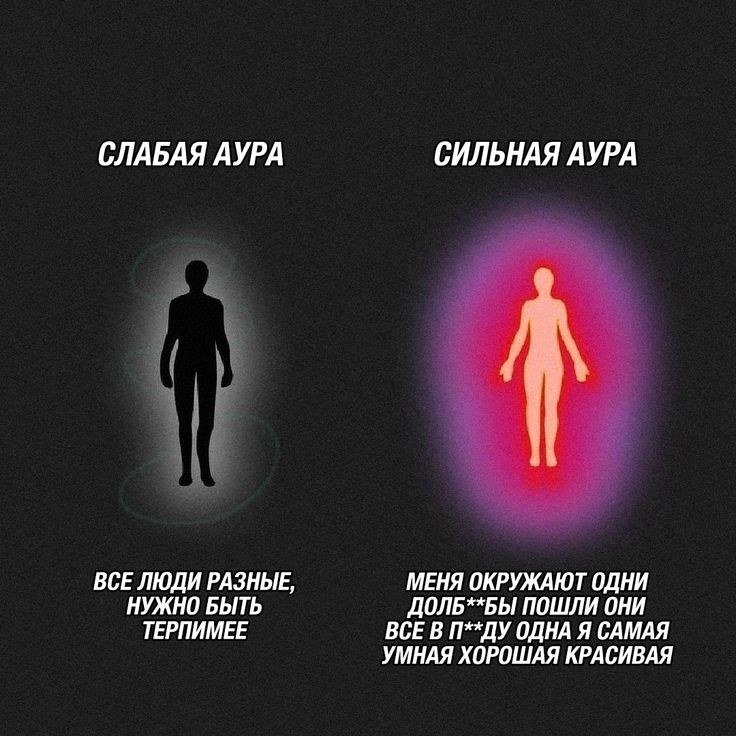
- The role of genetics in migraine susceptibility
- The relationship between migraines and other health conditions
- The potential of cannabinoids in migraine treatment
- The use of artificial intelligence in predicting and managing migraine attacks
As research progresses, it’s likely that we’ll see even more effective and personalized approaches to migraine management in the coming years.
The Difference Between Migraine With and Without Aura
In this Article
When you have long-term migraine, it’s about much more than a headache. You may feel sick to your stomach or find it hard to handle light, sounds, and smells. For some people, though, it doesn’t stop there. They also get something called an aura.
Most often, an aura causes you to see strange things, like colored spots or flashing lights. It can be scary, especially the first time it happens.
Migraines without auras are much more common than any other kind. You can get them as often as several times a week or as little as once a year.
Auras show up in about 1 in 3 people with migraine, but you’re not likely to get them every time. So it’s possible you might have both types of migraine, with auras happening here and there.
What Causes Migraines?
Scientists aren’t sure what causes migraines. They think many brain chemicals — such as serotonin, calcitonin gene-related peptide, and dopamine — play a role. According to the theory, a wave of nerve cell activity spreads across the brain and excites the trigeminal nerve. This causes the release of neurotransmitters that trigger a change in the size of blood vessels, releasing more neurotransmitters and finally causing an inflammatory process and pain.
According to the theory, a wave of nerve cell activity spreads across the brain and excites the trigeminal nerve. This causes the release of neurotransmitters that trigger a change in the size of blood vessels, releasing more neurotransmitters and finally causing an inflammatory process and pain.
Migraines often run in families. Other things can trigger migraine attacks for some people, like some foods, smells, stress, and things in the world around you. Changes in estrogen levels can lead to migraines for some people.
Migraines often begin in childhood and get worse through the teen years. More boys than girls have migraines, but more adult women than adult men have them. They usually happen less over time. Migraines become rare after age 50.
Although painful, a migraine is not life-threatening.
How Are They Different?
With or without an aura, you also get typical migraine symptoms, which may last 4 to 72 hours. They can include:
- Being sensitive to light, smells, sound, motion, and touch
- Blurred vision
- Pain that’s usually on one side of the head and worse when you move
- An upset stomach and throwing up
- Stiffness in your shoulders and neck
- Yawning
- Crankiness
When you get an aura, it typically sets in slowly over 5 to 20 minutes.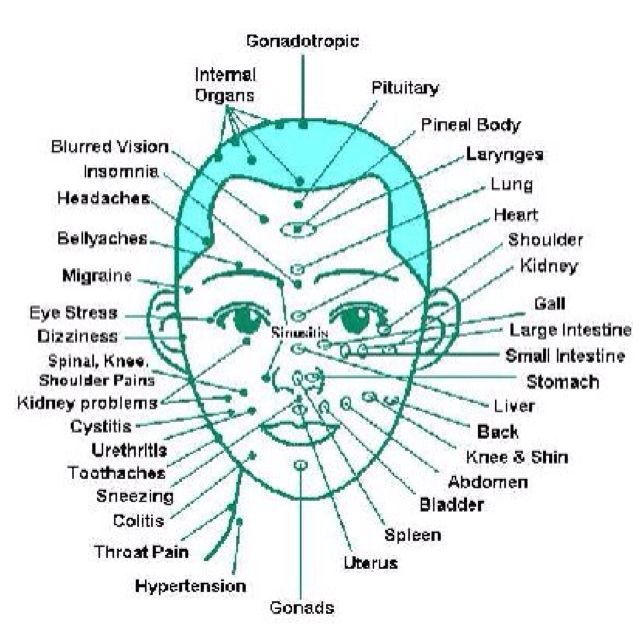 It may last up to an hour. It often acts as a warning before any pain shows up. But it can happen during the migraine, as well.
It may last up to an hour. It often acts as a warning before any pain shows up. But it can happen during the migraine, as well.
Visual auras. These are the most common ones. You might see unusual shapes or effects that grow or move, such as:
- Blind spots
- Colored spots
- Flashes of light
- Sparkles and stars
- Tunnel vision
- Zigzags
Other auras. Less often, they can affect your other senses and even your ability to move. You might have:
- Confusion and a hard time understanding people
- Movements you can’t control, like sudden jerks
- Muscle weakness
- Music or noises in your head that aren’t really there
- Pins and needles that start in your fingers or arm and spread to your face
- Speech problems, as if you know what you want to say but can’t form the words
It’s important to remember that these can also be symptoms of a stroke. If you have any of them and your doctor has not told you before that they are a part of your migraine, call 911./ativan-withdrawal-symptoms-4588394_final-6bb2e0e1202b4092ba7297c475a8509f.png)
Sometimes, you can get an aura without any other symptoms. That’s sometimes called a silent migraine. It’s more common in people 50 and older.
Do I Need Different Tests?
With any kind of migraine, your doctor may ask you things like:
- Do other people in your family have migraines or other kinds of headaches?
- Do you have any allergies?
- What is the level of stress in your life?
- Do you use medications such as birth control pills or vasodilators that could cause headaches?
- Do you notice that headaches start after coughing or sneezing or after intense exercise?
They’ll do tests to check for other conditions that could cause your symptoms. You may have blood or imaging tests, like a CT or MRI.
Symptoms of a migraine with aura can look like a more serious condition, such as a stroke or a seizure. To rule those out, you may get some extra tests, including an eye exam. You might also be more likely to have imaging tests.
The first time you notice an aura, it’s important to get medical care right away to find out what’s going on.
Once you’ve made sure there are no other issues, you don’t need to see your doctor every time you have that same aura. But if your symptoms change, make sure to check in.
Are They Treated Differently?
Not really. Experts aren’t sure what causes auras, so there’s nothing special you can do about them. It’s about treating the migraine symptoms and preventing more attacks.
To ease migraine symptoms:
- Stay in a quiet, dark room.
- Put cold compresses or pressure on the painful areas.
- Take pain-relieving medications such as aspirin, acetaminophen, ibuprofen, ketorolac, or naproxen. People under the age of 19 should not take aspirin.
- Use prescription drugs, such as almotriptan (Axert), eletriptan (Relpax), frovatriptan (Frova), lasmiditan (Reyvow), naratriptan (Amerge), rizatriptan (Maxalt), and sumatriptan (Imitrex, Onzetra Xsail, Sumavel DosePro, Tosymra, Zembrace SymTouch), which help narrow blood vessels.

- Ergots (Cafergot, Migergot) and gepants (Nurtec, Ubrelvy) may also ease migraine pain.
- Use medications to treat other migraine symptoms such as nausea and vomiting.
To prevent migraines:
Medications. If other treatments don’t work and you have 4 or more migraine days a month, your doctor may suggest preventive medicines. You take these regularly to make headaches less severe or less frequent. They include seizure medicines, blood pressure medicines (like beta-blockers and calcium channel blockers), and some antidepressants. CGRP inhibitors are a new class of preventive medicine that your doctor may recommend if other medicines don’t help.
Devices. Cefaly is a portable headband-like device that sends electrical impulses through the skin of the forehead to stimulate a nerve linked with migraine headaches. You use it once a day for 20 minutes. When it’s on, you’ll feel a tingling or massaging sensation. SpringTM or eNeura sTMS may be another option. You hold this device at the back of your head at the first sign of a headache, and it gives off a magnetic pulse that stimulates part of the brain. In addition, a noninvasive vagus nerve stimulator called gammaCore releases a mild electrical stimulation to the nerve’s fibers to relieve pain. Some of these devices may also treat migraines after they start.
You hold this device at the back of your head at the first sign of a headache, and it gives off a magnetic pulse that stimulates part of the brain. In addition, a noninvasive vagus nerve stimulator called gammaCore releases a mild electrical stimulation to the nerve’s fibers to relieve pain. Some of these devices may also treat migraines after they start.
Keep a headache diary. It will help you spot things that might trigger your migraines. Diary entries should include things like the date and time of your headache, any foods you had eaten, what you did, and medication you took just before the headache began. It may take 6 to 8 weeks or longer to begin to see patterns and triggers.
Avoid common food triggers. Use information from your diary and from trial and error to figure out if any of these foods might be causing your migraines:
- Chocolate
- Cheese
- Red wine or other types of alcohol
- Citrus fruits
- Avocados
- Bananas
- Raisins
- Plums
- Artificial sweeteners
- Food preservatives, such as nitrates, nitrites, and monosodium glutamate (MSG)
- Ice cream or other cold foods
Avoid medication triggers. Many over-the-counter and prescription drugs can bring on migraines. Check with your doctor if you think any of these may lead to your headaches:
Many over-the-counter and prescription drugs can bring on migraines. Check with your doctor if you think any of these may lead to your headaches:
- Cimetidine
- Birth control pills and hormone therapy
- Hydralazine (Apresoline)
- Nifedipine (Procardia)
- Nitroglycerin
- Reserpine
Never stop taking a medication unless your doctor tells you to.
Relieve mental or emotional triggers. Stress, depression, anxiety, and strong feelings such as grief can trigger migraines. Although you can’t always avoid these things, you can learn to control how you handle them. Relaxation, biofeedback, and self-hypnosis techniques can help relieve these sources of stress and prevent migraines, especially in children.
Reduce physical triggers. Illnesses, fatigue, and missing meals can all trigger migraines. So can overdoing exercise, motion, and head injuries. Even menstruation can set off migraines. Know how these things affect you, keep a regular routine, treat illnesses quickly, and take steps to avoid other physical triggers.
Look for environmental triggers. Some people are sensitive to flickering lights, fluorescent lights, changes in air pressure or altitude, or even bold visual patterns. Use your headache diary to spot any possible triggers in your environment — and then take steps to get rid of them or avoid them.
Migraine and Stroke
Migraine with aura slightly raises your chances of getting a stroke. This is especially important to know for women who take birth control pills, get hormone replacement therapy, or smoke, since these things can raise your odds even more.
If you have migraine with aura, work with your doctor to understand how you can lower the chances you’ll get a stroke. And keep in mind that an aura usually goes away when the migraine shows up. If it lasts more than an hour, get medical help right away.
© 2023 WebMD, LLC. All rights reserved.
SOURCES:
Photo Credit: Getty Images
The Migraine Association of Ireland: “Migraine Without Aura,” “Migraine With Aura. “
“
Mayo Clinic: “Migraine,” “Migraine with Aura.”
The Migraine Trust: “Types of Migraine,” “Migraine Without Aura,” “Migraine With Aura.”
American Migraine Foundation: “Migraine and Aura.”
American Family Physician: “Treatment of Acute Migraine Headache.”
eMedicine.com: “Headache, Migraine,” “Migraine Headache: Pediatric Perspective.”
International Headache Society: “International Classification of Headache Disorders, edition 2.”
eMedicineHealth.com: “Alternative and Complementary Approaches to Migraines and Headaches.”
FDA.
American Academy of Ophthalmology: “Photophobia: Looking for Causes and Solutions.”
Cleveland Clinic: “Migraine Headaches.”
Headache: “Noise as a trigger for headaches: relationship between exposure and sensitivity.”
Headache Pain: “Phenotypic features of chronic migraine.”
Nature Neuroscience: “A neural mechanism for exacerbation of headache by light.”
Neurology: “The anterior insula shows heightened interictal intrinsic connectivity in migraine without aura. “
“
NHS: “Migraine and light sensitivity.”
UpToDate.
Migraine Headaches | Kaiser Permanente
Skip Navigation
Condition Basics
What are migraine headaches?
Migraines are painful, throbbing headaches that last from 4 to 72 hours. When you have a migraine, it may be so painful that you aren’t able to do your usual activities. But migraines can be treated. And even though they make you feel bad, they don’t cause long-term damage.
What causes them?
Experts aren’t sure what causes migraines. They believe that changes in the activity of brain cells may lead to inflammation in certain nerves, which causes pain. Migraines often run in families, so genetics may play a role for some people.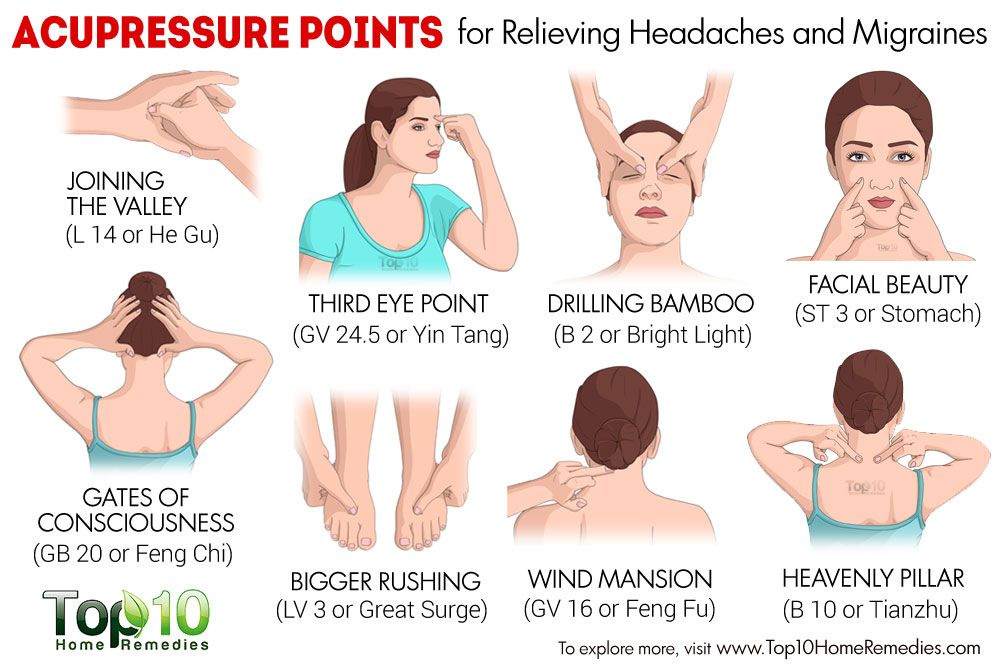 Some things, called triggers, can cause a migraine to start.
Some things, called triggers, can cause a migraine to start.
What can trigger a migraine headache?
Triggers are things that can cause a migraine headache to start. They include changes in daily routine, foods, hormones, and medicines. They can also include lights, odors, changes in the weather, or other things in the environment. Strong emotions, such as depression or anxiety, can also be triggers. Triggers are different for each person.
What are the symptoms?
The most common symptom of a migraine headache is a throbbing pain on one side of your head or behind an eye. Some people have an aura shortly before or during the headache. During an aura, you may see spots or flashing lights. Other symptoms of migraine include nausea, vomiting, and sensitivity to light.
How are they diagnosed?
To diagnose migraines, your doctor will ask about your personal and family history and examine you. Your doctor will ask how many headaches you have, how long they last, and what symptoms you have. You may get tests if your doctor thinks your symptoms may be caused by another disease.
How are migraine headaches treated?
You can’t cure migraines, but medicines and other treatments may help you feel better. Avoiding triggers can help too. You may be able to treat your headaches with over-the-counter pain medicine. If that doesn’t work, your doctor can prescribe stronger medicine. You may also try medicine to help prevent migraines.
Health Tools
Health Tools help you make wise health decisions or take action to improve your health.
Decision Points focus on key medical care decisions that are important to many health problems.
Actionsets are designed to help people take an active role in managing a health condition.
What Increases Your Risk
You may be more likely to get migraines if you have a family history of migraines. Females are more likely to get migraines than males. You may also be at higher risk if you are a teenager or young adult. Migraines often start during these years but may peak in your 30s.
Prevention
You can do things to help prevent migraine headaches. Try these tips.
- Keep a daily headache diary.
It can help you find out what triggers your migraines.
- Avoid your migraine triggers.

Triggers include changes in daily routine, foods, hormones, medicines, lights, odors, or other things in the environment. Triggers add up. So the fewer triggers you have at one time, the better your chance of preventing a migraine.
- Live a healthy lifestyle.
- Get regular sleep.
- Eat healthy foods at regular times.
- Avoid alcohol and drugs.
- Avoid foods that may trigger your headaches.
- Get regular exercise.
But be careful to not push yourself too hard. It may trigger a headache.
- Take medicines that prevent migraines.
- Don’t take medicine for headache pain too often.
Talk to your doctor if you are taking medicine more than 2 days a week to stop a headache. Taking medicine too often may cause medicine-overuse headaches.
- Find healthy ways to cope with stress.
Migraines are most common during or right after stressful times.
 Try finding ways to reduce stress like practicing mindfulness or deep breathing exercises.
Try finding ways to reduce stress like practicing mindfulness or deep breathing exercises. - Ask your doctor about trying herbs and supplements.
Some people find that magnesium and riboflavin (vitamin B2) help prevent migraine headaches.
- Try acupuncture or biofeedback.
Some people find that these can help reduce how many migraines they have or how bad the migraines are.
Learn more
Watch
- Fitness: Moving More
- Headaches: Avoiding Triggers
- Headaches: Keeping a Diary
- How to Do Mindfulness Meditation
- Rebound Headaches
- Sleeping Better
Symptoms
The most common symptom of a migraine headache is a throbbing pain on one side of your head. You also may have other symptoms before, during, and after a migraine.
You also may have other symptoms before, during, and after a migraine.
A day or two before a migraine starts, you may feel:
- Depressed or cranky.
- Very happy, very awake, or full of energy.
- Very sleepy.
Some people have an aura. It may happen shortly before or during the headache. Some people may have an aura without the headache. During an aura, you may see spots, wavy lines, or flashing lights.
When the headache starts, symptoms can include:
- Throbbing pain on one or both sides of the head.
- Pain behind one eye.
- Moderate to very bad pain. It may be so bad that you can’t do any of your usual activities.
- Nausea, vomiting, or both.

- Pain that gets worse when you’re around light, noise, and sometimes smells.
You may have muscle aches or feel very tired for up to a day after your migraine ends.
Learn more
What Happens
Migraines sometimes start with an aura of spots, wavy lines, or flashing lights about 30 minutes before the headache begins. Without treatment, a migraine headache can last from 4 to 72 hours. Muscle aches or feeling very tired may last for up to a day after the migraine ends.
When To Call
Call 911 or other emergency services if:
- You have a sudden, severe headache that is different from past headaches.

- You have symptoms of a stroke, such as:
- Sudden numbness, tingling, weakness, or loss of movement in your face, arm, or leg, especially on only one side of your body.
- Sudden vision changes.
- Sudden trouble speaking.
- Sudden confusion or trouble understanding simple statements.
- Sudden problems with walking or balance.
Call your doctor now or go to the emergency room if:
- You have a fever and a stiff neck.
- You have new nausea and vomiting, or you cannot keep food or liquids down.
Watch closely for changes in your health, and be sure to contact your doctor if:
- Your headache does not get better within 24 hours.

- Your headache wakes you up at night.
- Your headaches get worse or happen more often.
- You develop new symptoms.
- You have any problems with your medicine, or your medicine isn’t helping your headaches.
- You have new, different, or more frequent headaches.
- Your headaches occur after physical exercise, sexual activity, coughing, or sneezing.
- Your life is disrupted by your headaches (for example, you often miss work or school).
Watchful waiting
Watchful waiting is a wait-and-see approach. Trying it may be fine if you have recently been diagnosed with migraines and over-the-counter medicines are controlling your pain.
Exams and Tests
To diagnose migraines, your doctor will do an exam and ask questions about your personal and family history. Your doctor will ask how many headaches you have, how long they last, and what symptoms you have. There are no tests that can diagnose migraines.
Your doctor will ask how many headaches you have, how long they last, and what symptoms you have. There are no tests that can diagnose migraines.
Migraines can be hard to diagnose. Their symptoms are like those of other types of headaches. For example, many people have been diagnosed with sinus headaches when they actually have migraines.
It’s likely that you are having migraine headaches if they happen often and interfere with your daily life.
Your doctor will decide if you need to have tests to find out if your headaches are caused by another health problem. You may have an MRI, a CT scan, or a lumbar puncture.
Learn more
Watch
- Learning About Your CT Scan
- Learning About Your MRI Test
Treatment Overview
You can’t cure migraines. But you can use medicines and other treatments to feel better. Finding and avoiding the things that trigger your headaches may also help.
But you can use medicines and other treatments to feel better. Finding and avoiding the things that trigger your headaches may also help.
The goal of treatment is to reduce how often you get migraines and to stop the headaches with the fewest drug side effects.
For mild to moderate migraines, you may first want to try over-the-counter pain relievers. They have fewer side effects. And they cost less than other medicines. But if they don’t help, you may need prescription medicines.
Your doctor may prescribe medicines to stop or to prevent a migraine.
If treatment doesn’t help your migraines, you and your doctor may make changes. You may try different medicines, a new mix of medicines, or different doses. Sometimes, treatments that don’t use medicines are tried. It may take some time to find the right treatment to help you.
It may take some time to find the right treatment to help you.
Learn more
Self-Care
There are some things you can do when you feel a migraine starting.
- Stop what you are doing, and take your medicine.
Don’t wait for the migraine to get worse. Take your medicine exactly as your doctor told you to. Keep your medicine with you at all times so you are ready when a headache starts.
- Rest in a quiet, dark room until your headache is gone.
Close your eyes, and try to relax or go to sleep. Don’t watch TV or read.
- Put a cold, moist cloth or cold pack on the painful area.
Leave it there for 10 to 20 minutes at a time. Put a thin cloth between the cold pack and your skin.
- Relax your muscles.

Have someone gently massage your neck and shoulders.
- Take pain medicines exactly as directed.
- If the doctor gave you a prescription medicine for pain, take it as prescribed.
- If you aren’t taking a prescription pain medicine, ask your doctor if you can take an over-the-counter medicine.
- Don’t take medicine for headache pain too often.
Talk to your doctor if you are taking medicine more than 2 days a week to stop a headache. Taking too much pain medicine can lead to more headaches. These are called medicine-overuse headaches.
Learn more
Watch
- Rebound Headaches
- How to Do Progressive Muscle Relaxation
- Taking Medicine to Stop a Migraine
Medicines
Two kinds of medicines are used to treat migraines. There are medicines to stop a migraine and medicines to prevent migraines.
There are medicines to stop a migraine and medicines to prevent migraines.
Finding the right mix of medicines for you may take some time. So work closely with your doctor to try different medicines and doses. In most cases, your doctor will first prescribe a medicine that causes the fewest side effects. Medicines may be prescribed based on your type of migraine.
Medicines can help you feel better. But they can also be dangerous, especially if you don’t take them the right way. Be safe with medicines. Take them as prescribed by your doctor. Read and follow all instructions on the label.
Medicines to stop a migraine
These are sometimes called abortive medicines. They may be over-the-counter or prescription medicines. If you take the medicine at the first sign you’re getting a migraine, you may stop the headache before it starts.
If your migraines are mild to moderate, you may need only an over-the-counter medicine to stop the pain. Most doctors recommend that you try these medicines first. That’s because they may have fewer side effects than prescription medicines. But if they don’t stop your headaches, your doctor may prescribe other medicine.
Your doctor may suggest that you take a mix of medicines to stop a headache. For example, you may take acetaminophen or naproxen along with a prescription medicine, such as a triptan.
Medicines used to stop a migraine include:
- Over-the-counter medicines. Examples include acetaminophen (Tylenol), ibuprofen (Advil, Motrin), and naproxen (Aleve). Some over-the-counter medicines combine acetaminophen, aspirin, and caffeine.
- Triptans (serotonin receptor agonists).
 Examples are sumatriptan and zolmitriptan.
Examples are sumatriptan and zolmitriptan. - Ergotamine derivatives. An example is dihydroergotamine.
Medicines such as ubrogepant may be tried if you can’t take other medicines or the medicines did not work.
Talk to your doctor if you are taking medicine more than 2 days a week to stop a headache. Taking too much pain medicine can lead to more headaches. These are called medicine-overuse headaches.
If you have nausea or vomiting during migraine attacks, your doctor also may prescribe medicine to help with these symptoms.
Medicines to prevent a migraine
These medicines are often called preventive medicines. You get most of them with a prescription, but some over-the-counter herbs and supplements may be tried too. You take these every day or whenever your doctor tells you to.
You take these every day or whenever your doctor tells you to.
Medicines used to prevent migraines include:
- Anticonvulsants, such as topiramate.
- Antidepressants, such as amitriptyline.
- Beta-blockers, such as propranolol.
- CGRP antagonists, such as erenumab.
- Botulinum toxin, such as Botox. This is used for prevention if you have chronic migraines.
You may want to try medicine to prevent a headache if:
- You use medicines to stop headaches more than twice a week.
- Medicines to stop migraines aren’t working well for you.
- You have four or more headaches a month that keep you from doing your daily activities.
- You have menstrual migraines.

- You have uncommon migraine symptoms. These may include a long period with aura or numbness during your headache.
Learn more
Watch
- Taking Medicine to Stop a Migraine
Credits
- Top of the page
Next Section:
Health Tools
What kind of MRI to do with a headache and what will it show?
Most often, we do not pay attention to headaches, do not attach importance to the frequency of their occurrence. Every time we take pills, without thinking that this is just a way to temporarily relieve uncomfortable pain. Headache is the same sign of health problems as fever with a cold or abdominal pain with gastrointestinal diseases.
Headache MRI procedure
Headaches can have a different nature and different causes. And in order to get an answer to the patient’s question: “Why does my head hurt?”, The doctor must give a direction for diagnosis and prescribe examinations.
And in order to get an answer to the patient’s question: “Why does my head hurt?”, The doctor must give a direction for diagnosis and prescribe examinations.
MRI and CT are used as the main diagnostic method:
- MRI (Magnetic Resonance Imaging) is a procedure that gives a complete picture of the state of the examined part of the patient’s body, as well as the presence or absence of a particular disease. With MRI, clear images are obtained by examining the human body through exposure to a magnetic field.
- CT (computed tomography) is a diagnostic method that also gives a clear image of the examined area, but by exposing it to x-rays directed at different angles.
Why do head MRI for headaches?
MR-tomography diagnoses: the presence or absence of brain tumors, cerebrovascular accidents, vascular lesions (for example, aneurysms), the consequences of a number of diseases and stroke. The survey provides information about the presence or absence of serious diseases, which are characterized by chronic or recurrent headaches.
If you have a headache, the doctor will refer you to an MRI or CT scan. Survey data provide detailed information about pathologies, if any, but do not always provide information about the causes of pain in the head. If necessary, the specialist should conduct a more detailed examination of the patient.
Diagnosis of migraine with MRI
Severe and prolonged headaches on one side of the head (rarely on both), which are accompanied by symptoms such as irritation, feeling unwell, nausea, vomiting, etc., may indicate a migraine or brain diseases that have similar symptoms.
MRI for migraine is prescribed to detect pathologies of the vessels of the head, structural changes in the brain, severe organic lesions and other pathologies.
What will an MRI show for migraine? A migraine attack is expressed in the expansion of blood vessels in the brain, after which a sharp (and painful for a person) spasm occurs. An MR tomograph captures blood flow disorders (during attacks) and reflects ischemic foci that appear in large numbers.
What kind of MRI should be done for a headache?
The examination should be as complete as possible so that the doctor can draw up an optimal plan to solve the problem and find out why the patient has a headache. One of the first and main studies is Brain MRI .
If it does not give the necessary picture of the problem, then it can be prescribed, as well as: MRI of the cervical spine
- duplex ultrasound scan of neck vessels ;
- ambulatory blood pressure monitoring and ECG ;
- blood and urine tests.
What kind of MRI or other diagnostic method will need to be done for headaches, the doctor determines after collecting an anamnesis and an initial examination of the patient.
Detectable types of headache
Headache is different and occurs under different circumstances, and is also characterized by different symptoms.
Sinus pain
This type of pain appears due to inflammation in the sinuses, which is characterized by a runny nose and nasal congestion, swelling of the mucosa. At the same time, the forehead and the entire area around the nose begin to hurt. Sinus pain disappears when the cause of its occurrence – inflammation – passes.
At the same time, the forehead and the entire area around the nose begin to hurt. Sinus pain disappears when the cause of its occurrence – inflammation – passes.
In violation of blood circulation in the brain
Violation of cerebral circulation can be acute or chronic and accompanied by headaches. With a different clinical picture, this can be a sharp pain in the head and eyeballs, or pain along with dizziness, nausea, poor sleep, etc.
After damage to brain tissue
This type of headache occurs after injuries (with injuries of superficial tissues), oxygen starvation of tissues, fluid accumulation in tissues, etc. The soft tissues of the brain have a large number of nerve endings. Soreness often occurs on the surface of the head and may be neurological in nature.
For neck osteochondrosis
With osteochondrosis, a headache appears in the neck and in the back of the head, and then goes to one of the halves of the head. The pain can vary in intensity and be of a different nature, as well as be accompanied by dizziness and nausea.
How is MRI of the brain performed?
For the procedure, the patient lies down on the table-transporter, which drives into the tomograph – a scanning device. During the examination, the patient remains in the tube and must remain still so that the picture is clear. The procedure can take a different time – from 15 minutes.
No special preparation is required, but it is necessary to warn the doctor if you have claustrophobia (this may serve as a contraindication to the procedure). If you feel unwell during the MRI, you can immediately report this to the specialist performing the head MRI procedure.
Headaches after MRI: what to do?
To date, MRI is considered one of the safest diagnostic techniques, but in some cases, patients complain of severe pain in the back of the head or crown. Sometimes a person feels sick, dizzy.
This symptomatology occurs due to the individual characteristics of the body and increased sensitivity to influences of this kind. Symptoms are usually temporary and disappear within a day. If necessary, the doctor can make recommendations in order to relieve symptoms.
Symptoms are usually temporary and disappear within a day. If necessary, the doctor can make recommendations in order to relieve symptoms.
MRI for chronic headache
Chronic headache is a direct signal of the development of pathological changes both in the structures of the brain and in other areas of the body. Constant pain spoils not only the quality of life and affects performance, but can also lead to the development of complications. MRI for headaches is an informative and safe diagnostic method that allows you to determine changes in the cerebral cortex and subcortical structures with 100% accuracy.
When should an MRI be done for headaches?
An MRI of the brain should be performed immediately if the following clinical symptoms appear:
- Along with headache, there is double vision, difficulty speaking, weakness in the upper and lower extremities, facial asymmetry.
- Chronic headache does not go away on its own without the use of analgesics.

- Increased headache when coughing, changing body position, physical activity.
- If pain medications no longer relieve headache attacks.
Pain indicates an already developed problem, therefore, even in the absence of symptoms of malaise, it is recommended for any person to perform a control tomography of the brain once every 5 years to assess the state of its structures.
Chronic headache may be associated with the development of an inflammatory process in the sinuses, an infection of the middle ear, cerebral aneurysms, benign and malignant neoplasms, as well as inflammation of the meninges (meningitis).
What can an MRI show in chronic headache?
If a person suffers from frequent headaches for a long time, MRI of the brain will be able to reliably determine the following probable causes of malaise:
- any neoplasms in the cortex and subcortical structures;
- cerebral aneurysms;
- pre-stroke condition;
- consequences of ischemic and hemorrhagic stroke;
- hematomas;
- consequences of traumatic brain injury;
- infection of the brain;
- cysts;
- pathological changes in the middle ear and orbits;
- inflammation of the frontal, maxillary and sphenoid sinuses;
- demyelination of nerve fibers (multiple sclerosis).

What type of MRI should be done for headaches?
When the question arises as to which MRI to perform for headaches , then attention should be paid to the potential causes of this symptom. In addition to pathologies from the central nervous system, degenerative-dystrophic changes in the cervical spine can be the cause of chronic headache.
We are talking about cervical osteochondrosis and instability of the vertebrae in this area, which leads to compression and deformation of the vertebral artery.
Comprehensive examination for chronic headache includes: MRI of the brain, MRI of the spine and MRI of the vessels of the brain.
Chronic headaches: MRI or CT?
Computed tomography is a less safe diagnostic method, since the examination creates a radiation load on the body. With the help of SCT, it will not be possible to identify structural changes in the brain that caused the malaise. Timely diagnosis of the causes of headaches is important, and MRI of the brain in this case is the preferred method of examination.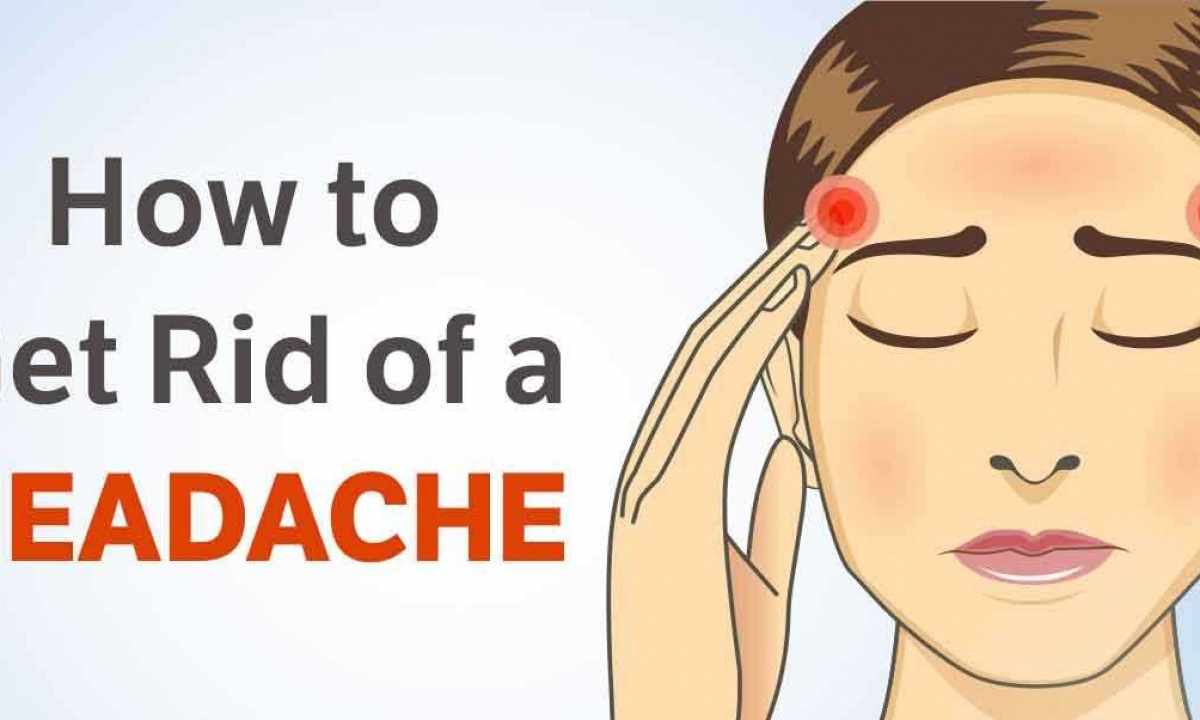
MRI at the DonMed clinic
If a headache has become a common occurrence, then to determine its cause, it is recommended to undergo an MRI examination of the brain and cervical spine at the DonMed clinic.
Scanning of all parts of the body is carried out on a modern Philips Achieva 1.5T tomograph, the power of which allows diagnosing any structural changes at the stage of their inception.
At Happy Hour you can get a 20% discount on magnetic resonance imaging. Sign up for an examination at the specified phone number or use the electronic form. In order to clarify the prices for MRI of the brain, cervical spine and cerebral vessels, follow the link.
To make an appointment, call tel. +7-863-333-50-70 or fill out the feedback form.
Any questions?
Ask a specialist right now
Click to call
+7 (863) 333-50-70
Consultation
now
I consent to the processing of my personal data and I am familiar with the Policy for their processing.



 Try finding ways to reduce stress like practicing mindfulness or deep breathing exercises.
Try finding ways to reduce stress like practicing mindfulness or deep breathing exercises.



 Examples are sumatriptan and zolmitriptan.
Examples are sumatriptan and zolmitriptan./top-warning-signs-you-need-a-new-job-2063029-CS-FINAL-6b64b88515e347b89d176447cf8ce500.png)
